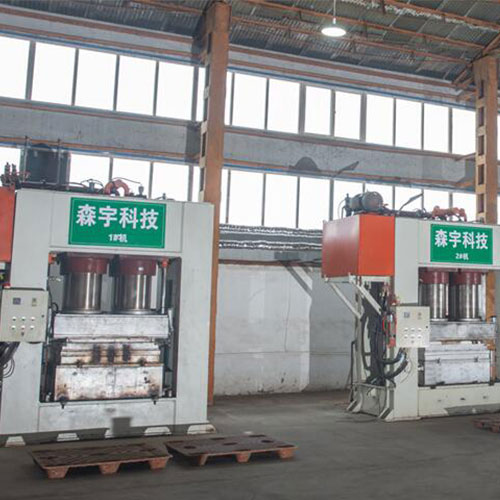Innovating Sustainability: Key Components of the Fumigation Free Plant Fiber Pallets Making Machine
2024-06-20
In recent years, industries worldwide have been increasingly prioritizing sustainability in their operations. One significant advancement in this direction is the development of fumigation-free plant fiber pallets making machines. These machines not only revolutionize pallet production but also contribute significantly to environmental conservation. In this blog, we will explore the key components and technologies integrated into the fumigation-free plant fiber pallets making machine, highlighting how they ensure efficient and sustainable production.
Understanding the Fumigation Free Plant Fiber Pallets Making Machine
1. Raw Material Handling System
Plant Fiber Feeding Mechanism:
- The machine incorporates an automated system for feeding plant fibers, typically sourced from agricultural residues or fast-growing plants like bamboo and sugarcane.
- This system ensures consistent raw material supply, optimizing production efficiency and reducing waste.
2. Fiber Processing and Compression
Compression Chamber:
- Plant fibers undergo a compression process within a specially designed chamber, where they are compacted under high pressure and temperature.
- Advanced compression technology ensures uniform density and strength in the pallets, meeting industry standards for load-bearing capacity and durability.
3. Binding and Adhesive Systems
Natural Binders:
- Instead of traditional adhesives, the machine utilizes natural binders derived from plant-based materials or bio-resins.
- These binders are environmentally friendly and non-toxic, enhancing the sustainability profile of the pallets while maintaining structural integrity.
4. Molding and Shaping Mechanism
Molding Techniques:
- The machine employs precision molding techniques to shape the compressed fibers into pallets of varying sizes and configurations.
- Customizable molds allow for flexibility in pallet design, accommodating specific customer requirements and logistical needs.
5. Heat Treatment and Drying
Fumigation-Free Process:
- A key feature of the machine is its ability to heat-treat pallets without the need for chemical fumigation.
- Heat treatment not only ensures compliance with international phytosanitary standards but also eliminates pests and pathogens, making pallets suitable for international trade.
6. Automation and Control Systems
Integrated Automation:
- Automated control systems monitor and adjust process parameters such as temperature, pressure, and molding cycles.
- Real-time data analytics optimize production efficiency and minimize energy consumption, enhancing overall operational sustainability.
Benefits of the Fumigation Free Plant Fiber Pallets Making Machine:
Environmental Sustainability:
- By utilizing plant fibers and natural binders, the machine reduces reliance on finite resources and minimizes carbon footprint.
- Fumigation-free production aligns with global efforts to enhance biosecurity and prevent the spread of invasive species through international trade.
Economic Viability:
- Lower production costs associated with raw materials and energy-efficient processes contribute to cost savings for manufacturers and end-users.
- Enhanced product durability and performance reduce lifecycle costs and improve supply chain efficiency.
Regulatory Compliance:
- The machine meets stringent regulatory requirements for phytosanitary standards and sustainable manufacturing practices.
- Compliance with international trade regulations facilitates market access and strengthens global competitiveness.
Future Perspectives
The fumigation-free plant fiber pallets making machine exemplifies innovation at the intersection of technology and sustainability. As industries continue to embrace eco-friendly solutions, these machines pave the way for a greener and more sustainable future. By integrating advanced manufacturing technologies and environmentally conscious practices, manufacturers can meet growing demand for sustainable packaging solutions while contributing positively to environmental stewardship. The journey towards sustainability in pallet production is not just about reducing environmental impact but also about fostering innovation and driving economic prosperity through responsible manufacturing practices.



